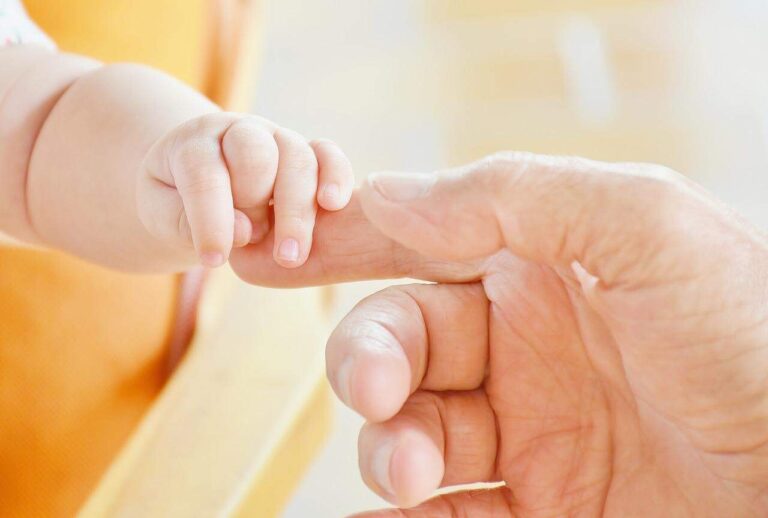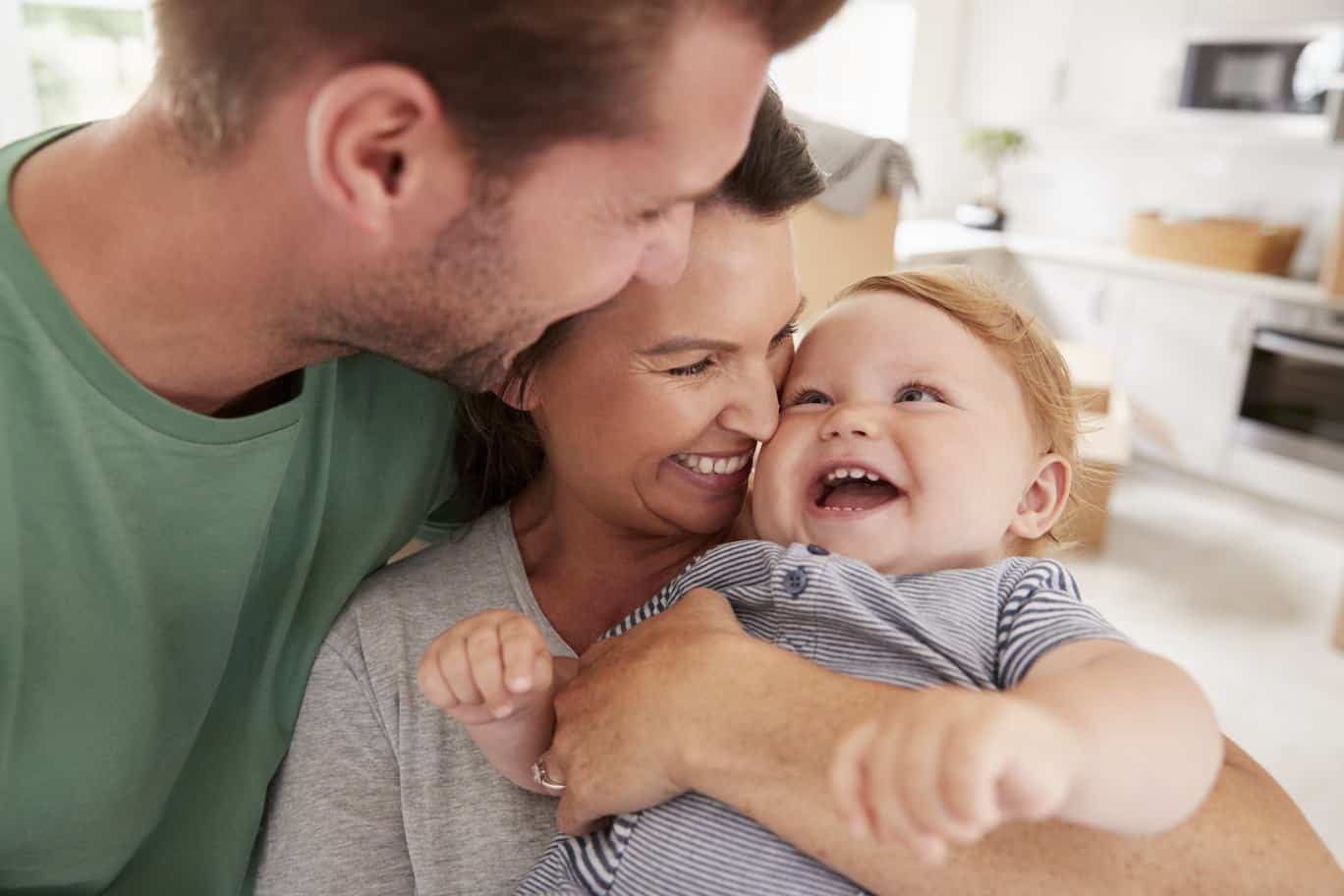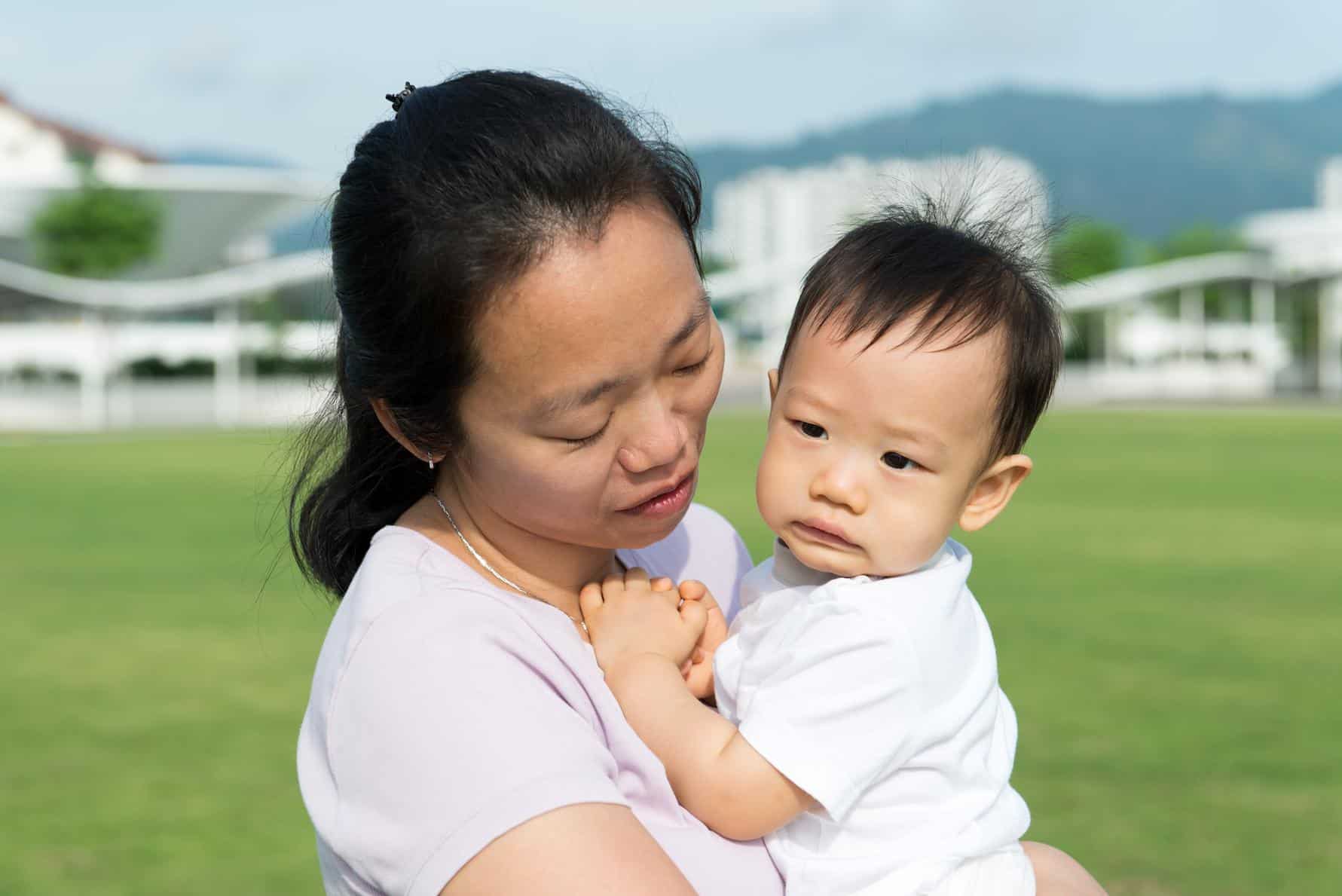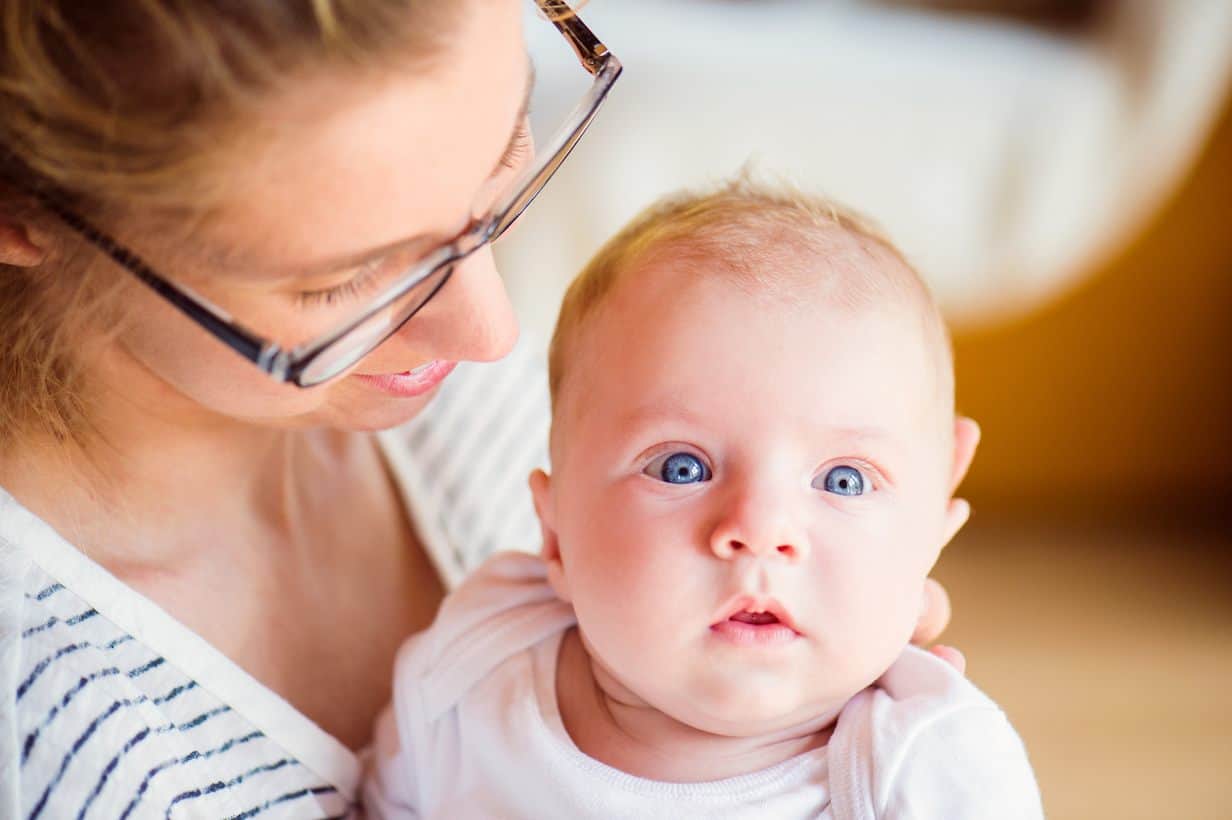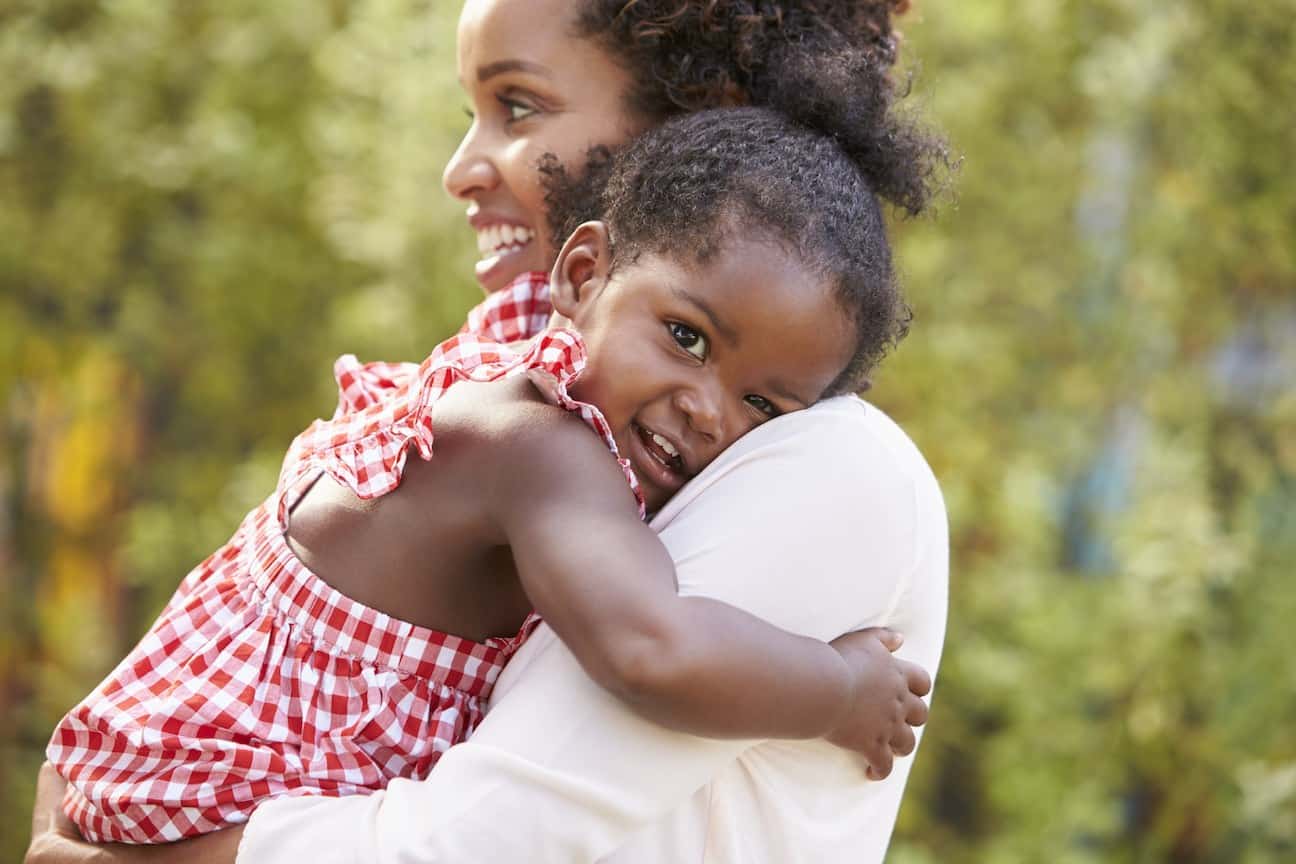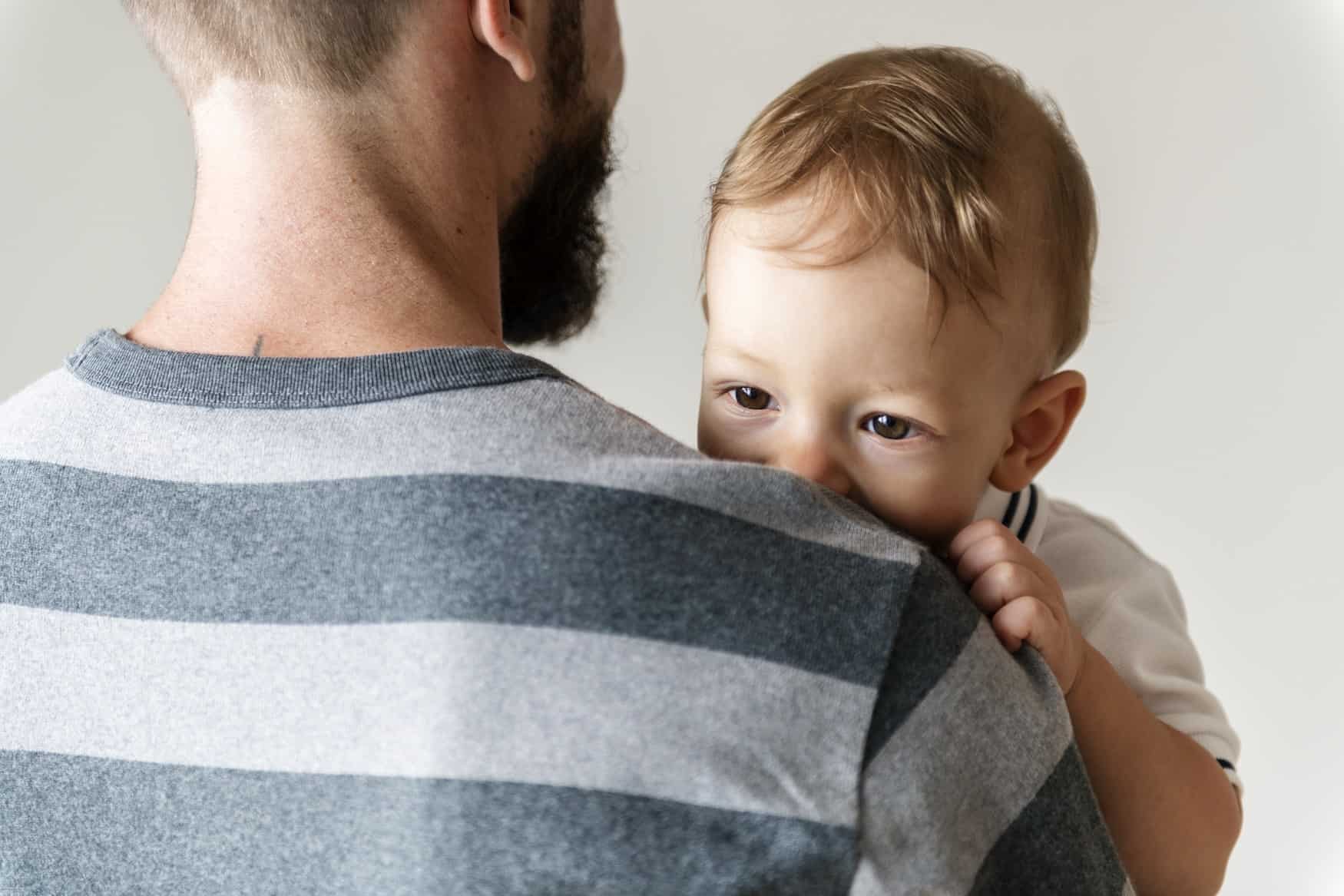Did you know that the relationship you form with your child in the first three years of their lives is essential for their psychological well-being?
Its quality has long-lasting effects on psychological development. [1]
In fact, one of the most famous psychological theories of all times, emphasizes this “caregiving bond” as the foundation for our feeling of intimacy, safety, and trust in future relationships with others. [2]
It is called the Attachment theory.
“The father” of this theory is British psychologist John Bowlby, who described attachment as a “lasting psychological connectedness between human beings” [3]
It is a tie based on the need for safety, security, and protection and “serves a biological function of promoting protection and survival”. [2]
Table of Contents
- Why is Attachment important to your child?
- The stages of Attachment: How does it develop?
- Styles of Attachment: How do children behave?
- Using Attachment Theory to Become a Better Parent
- #1 You can’t pour from an empty cup: Take care of yourself!
- #2 Learn your baby’s non-verbal communication signs repertoire
- #3 Be patient!
- #4 Touch matters!
- #5 Adapt to your baby’s primary needs: sleeping and eating
- #6 Be responsive to their crying
- #7 Give your baby some time to adapt to the presence of a stranger
- #8 Be consistent!
- #9 Time matters, but quality matters even more
- #10 Join your child in exploring the environment
- #11 Raising a child is a team effort – include your spouse!
- #12 Avoid mixed signals when leaving your child with someone else
- #13 Slowly increase the duration of your absence
- #14 Devote time to understanding your own challenges and struggles as a parent
Why is Attachment important to your child?
A baby cannot regulate or control the intensity of their sensations. At the same time, the world is yet a strange and unfamiliar place.
This is why, when your child experiences discomfort or perceives a threat, your responsiveness, helpfulness, and warmth is what they depend on.
It is crucial that your child learns to trust you to be the “safe base” to protect them and comfort them in the times of need.
Children who develop secure attachment:
- Show more curiosity
- Self-reliance
- Independence [1]
This is what your child needs to be able to explore their environment, actively learn and grow.
The stages of Attachment: How does it develop?
Your child does not automatically become securely attached to you just because you are their parent.
As in every relationship, it takes time to build trust.
To understand the development of attachment, researchers Schaffer and Emerson observed 60 infants in their homes every four weeks during the first year of life and then once again every 18 months. [4]
They recorded three measures:
- Stranger Anxiety – how the child responds to the arrival and presence of a stranger
- Separation Anxiety – how upset is the child when the parent leaves
- Social Referencing – how much the child looks for the cues from parents to get the sense of whether something is safe or appropriate to do
The analysis of their behavior resulted in four distinct stages of attachment.
Pre-attachment stage – Up to 6 weeks.
The child is just getting to know the world and there’s so much going on in it!
A person or a thing, it doesn’t matter! The child is likely to respond with the same reaction (such as a smile). In this period, we cannot yet talk about the attachment.
However, your responsiveness as a parent still matters.
This is nevertheless, an introductory stage that sets the basis for child’s learning about who they can depend on.
Indiscriminate attachment – From 6 weeks to 7 months
The child enjoys being around people. They don’t care much about who responds to their needs, as long as they feel safe and comfortable.
However, after just three months, the child starts smiling more at the faces that are familiar.
The better the child knows you, the faster you can comfort them when they are upset.
Discriminate attachment or Specific attachment – From 7 to 9 months
A specific attachment is formed with a single figure. This is usually the child’s mother.
It is a person that baby looks to for security, comfort, and protection.
At this stage, no one can replace mom!
She is the source for everything the baby can think of.
The strangers stop being “dangerous” only when mom is there to assure the baby that everything’s okay.
She is a safe harbor to which a child returns to after they have encountered a new person, thing or a situation.
Mom is the only one who can easily entertain and comfort, provide and guide, ensure safety and protection.
Multiple attachments – After 10 months
The baby starts being more and more independent.
The more it interacts with the world, the more they see there are other people who can be a resource to them.
Especially after 18 months, the child starts trusting other significant people in their lives. This is what is meant by multiple attachments.
An important thing to keep in mind is that it is not just about the quantity of time spent with the child. The responsiveness of the person who’s with the child, their ability to react adequately to their needs for play, comfort, assistance is what helps create bonds. So, if you are with a child, make sure that you are actively engaged in interacting with them!
So, the attachment slowly develops through these stages.
Only after the analysis do we really see them as distinct. While the baby is growing, we tend to see them as a continuous flow of our child maturing.
We watch the child develop a better sense of who we are for them, seeing us as an irreplaceable resource for some time until they feel confident enough to start bonding with other people.
This primary emotional bond that we help our child develop is the one that anchors their trust in people they interact with next.
Styles of Attachment: How do children behave?
Not all attachments are the same.
Depending on our experience, even as babies, we learn whether to rely on somebody or not.
The research of Mary Ainsworth helped increase our understanding of different attachment styles. She is often referred to as the “mother of attachment theory”.
Her famous “strange situation” research became one of the most significant ones in developmental psychology. [5, 6]
The study she conducted focused on children between the ages of 12 and 18 months.
Here’s a video thats shows how it was done:

(Warning: it shows a child crying, so if you are sensitive to such things – it might be better for you not to watch it!)
The researchers observed the children in a situation where they were briefly left alone and then reunited with their mothers. One part of the experiment included an interaction with a stranger.
Now, you can only imagine how stressful this could be for a child!
First mom is leaving and then, there’s this stranger in the room!
Well, not all of the kids respond the same.
The researchers observed the differences in their behavior and then classified them into three major attachment styles which explain the nature of this primary emotional bond.
The fourth attachment style was later added by researchers Main and Solomon. [7]
Secure attachment
This is the kind of attachment style we want to facilitate in our children.
Bowlby suggests that once the child experiences secure attachment, they are likely to feel like the primary caregiver is “available, responsive and helpful” [8]
The attachment figure is seen by a child as a safe base to explore the environment.
When the child experiences distress, they look up to find this figure and seek the comfort she can offer. The child feels confident that the attachment figure can truly provide them easily with safety and comfort.
When with a stranger, the child can be avoidant of him. However, once the mother is present, the child seems to adapt pretty easily and be friendly in their presence.
How can we facilitate the development of secure attachment?
As Bowlby already pointed out, it’s about being:
- available when your child needs you
- responsive to their needs
- warm and comforting
- helpful in assisting them with activities they try out.
Ambivalent-insecure attachment
This style is also called insecure resistant.
The children behave inconsistently with their mothers, showing opposing behaviors.
They seem to be very much upset when she is leaving. But then, when she returns, the child resists contact or may even push her away!
It seems like the child wants her there and tries to keep her there as long as possible, but then, when she leaves, she’s no longer seen as a resource they can trust to be available.
Finding comfort in their mother when they are reunited is hard for them. They appear to be quite fearful of strangers, too.
How does this style develop?
Well, imagine that your only resource for comfort is a good one when it is there.
However, you can’t count on it to always be available. What would you do?
The odds are, you’d be very upset when they are leaving. You would cry and beg them to come back. But then, after they are gone, you would slowly learn how to cope without them.
When they are back, you would be unsure about whether to continue to rely on them or tell them to walk away.
The same applies here. The resource is not always available.
Mom was helpful, warm and comforting in some situations.
However, in other situations, when she was needed, mom wasn’t there. This is why the child becomes insecure about how much they can trust her to be a resource for them.
They become ambivalent.
Avoidant-insecure attachment
Those children that develop this style of attachment seem to be very independent of their attachment figure both physically and emotionally. [9]
- If they are upset, they do not seek comfort in their moms.
- They do not check for cues when they are playing in a strange room.
- When their mom leaves the room, they show indifference to it.
- A stranger walks in, they are fine with it. No reaction whatsoever!
According to Ainsworth, this kind of attachment develops when a caregiver lacks sensitivity and tends to reject the needs of the child.
During the times of emotional distress, the caregiver might not be available or when available, is withdrawing from helping a child.
So the resource is not only unavailable when it is absent, but also when it is right there next to the baby.
Insecure-disorganized/disoriented attachment
This attachment style was later added to the original three styles. [7]
The child behaves disoriented and confused.
- They want their mom’s comfort but seem fearful to be near her.
- They are running up to her, but then pulling away or running away.
- They might be hugging her at first, only to hit her next.
Their behavior is composed of mixed, contradictory signals directed to the primary caregiver.
The researchers believe that the main cause for developing this style of attachment is the inconsistency in the behavior of a parent. Since a child does not know what to expect from a parent, they fail to develop one particular response strategy.
Parents can then be seen both as the sources of security and comfort, as well as the sources of fear.
[thrive_custom_box title=”” style=”dark” type=”color” color=”#faf8d7″ border=”#000000″]
So, it’s important to know that:
- Your child needs you to be available – they require your time.
- Your child needs you to be responsive, warm and useful – they need you to take care of them, comfort them, play and interact with them.
- Your child needs you to be consistent – they will trust you if they feel they can rely on you.
This is especially important in the first 10 to 18 months until they start becoming more independent.
[/thrive_custom_box]
Using Attachment Theory to Become a Better Parent
Your mission as a parent is to help your child grow and develop into a confident and happy person with a fulfilling life.
We understand that the responsibility you have is not an easy one to handle.
It is perfectly normal to feel anxious and have doubts about your capacity to do this job right.
The parents would go miles to provide what’s best for their children, which often includes neglecting their own feelings of distress and exhaustion. Attentive attunement to all aspects of a child is a very demanding task. [1]
This is why, before we go forward with tips on how to help your child develop a secure attachment, we need to make sure you acknowledge the necessity of first, taking care of yourself as a parent.
#1 You can’t pour from an empty cup: Take care of yourself!
To be able to respond with sensitivity and warmth, you need to feel well.
In this period, when the most of communication happens entirely nonverbally, have in mind that your baby can read the cues your body is giving.
Do you notice how your baby starts crying when you’re upset? This is one of the examples of how the baby notices that their main resource of safety and comfort is not feeling well.
This is why you need to make your own well-being one of the priorities.
Make sure that you are well rested and emotionally capable to respond to your baby’s needs. Compose your self-care list and try to ensure that you are feeling well. Do not isolate yourself from the joy of the activities you had before you had a baby and don’t hesitate to ask for help when you’re in need. This will not make you a weak and selfish parent, but quite contrary – a responsible one.
#2 Learn your baby’s non-verbal communication signs repertoire
One of the myths is that just by being a parent, you automatically have a good understanding of what is going on with your baby. When you start feeling like this is not happening to you naturally, you might start doubting your parental instincts. Well – don’t!
Communication takes understanding, careful observation of emotional cues and responsiveness. This is something that we, as human beings, learn from each other.
Therefore, try to observe your baby’s reactions through different situations. For example, pay close attention to the way they use sound and movement. Observe how they move their face, their hands or legs, how they close their eyes or how they cry or vocalize their needs. Try to be observant of these details and their change once you respond with mimicking their behavior, by hugging them, feeding them or interacting in some different way. If it helps, develop some sort of a diary to capture your thoughts.
#3 Be patient!
Remember, patience is the key. This process takes time and devotion. These non-verbal signs are your cues. In learning this about your baby, you are mastering the art of interpreting the signs by assigning them a verbal cue (“You’re hungry”) and responding with behavior (feeding your baby).
This is also one of the ways your baby learns to interpret what is going on in her body! Think of this as a co-learning process.
The reinforcement provided by mother through eye-contact, cuddling, touching, or praise may help encourage child’s communicative attempts, such as babbling or laughing [1]
#4 Touch matters!
Being present physically through touch is an important security cue for your baby.
It’s how they experience comfort and protection. These experiences plant the seeds for our feelings of belonging and safety.
Hugging your kids often won’t make them spoiled – don’t worry.
Remember, your baby is just learning what challenges are. No matter how small they might seem, such as bumping ahead, hearing a loud, unexpected sound or seeing an unfamiliar creature, learning about these situations and overcoming them with the remaining sense of safety, is crucial for your child’s development.
#5 Adapt to your baby’s primary needs: sleeping and eating
Allowing extra time to rest or increasing the frequency of feeding can significantly influence your baby’s ability to engage in interaction with you. Depending on how active they are, they might require more or less sleep. They change continuously and the parent must learn to adapt efficiently through these changes.
This does not mean that schedules are to be completely disregarded. This means that by keeping a close eye to your baby’s unique signs and signals you will notice the need to increase the flexibility of them.
Do not be afraid to modify the schedule to respond to their needs. Remember, you do not need to change the schedule at the first sign of baby’s protest. However, if you feel like there’s an indication of a pattern (3 or more times) introduce some modifications and observe the reactions.
#6 Be responsive to their crying
Letting your baby cry it out might not be the best way to guide them in developing a secure attachment. Remember, your baby is just learning the meanings of different sensations. Whenever she experiences a certain sensation, bear in mind that it might be her first time acknowledging that something unfamiliar and potentially dangerous is happening to her.
She’s dependent on you to interpret those signs and convince her that everything is truly going to be okay!
#7 Give your baby some time to adapt to the presence of a stranger
Even if your baby has seen a certain person before, this person might still be a stranger to her. Let your child observe the “stranger” from her safe base you provide for them.
Slowly encourage your child to step forward and interact with this new person. Your baby will check for your cues to ensure that this is safe. Be as responsive as possible when they are looking for your support. Nodding, clapping or vocalizing your support (“Yaaay, there you go!”) is a good way to let them know you are there. Be receptive to their occasional return to the safe base of your embrace. Reassure them that everything is okay and encourage them to continue to explore.
#8 Be consistent!
Imagine you have a friend that responds differently every time you feel sad. You get used to them comforting you, but then, out of nowhere, they start yelling at you. Then, next time you get a lot of judgment coming your way! Confusing, right? Your baby demands the same amount of consistency. That means that in responding to your baby’s nonverbal cues, you’ll learn what works for her. Try to be consistent with the reactions that calm her, comfort her, entertain her and help her see you as an available and warm resource.
#9 Time matters, but quality matters even more
In having fun with your baby, we encourage you to be creative.
Everything from peek-a-boo, making funny sounds, playing with baby toys to exchanging smiles, hugging and talking to your baby is beyond valuable for your child’s development. Being truly present in your baby’s life is more than just being physically present as a source for her primary needs. [10] The cuddles, the eye-contact, talking to your baby and all of those small details through which you show your affection and love is what makes a difference.
This is not only important for developing secure attachment but for your baby’s cognitive development too. [11]
Many moms are working moms. When going back to work, there’s always some worry about how less time spent with your child would affect your relationship. There is some research says that even if your child spends more than 30 hours per week in child care, the chances are the quality of your relationship with your child won’t be compromised. [12]
However, bear in mind that every child reacts differently. Your readiness to adapt to their needs is what matters the most!
#10 Join your child in exploring the environment
Children are learning through interacting with people, things, and situations.
Exploring is a much safer endeavor when it is done with a person you feel safe with. Introducing a world as a colorful place in which there’s no reason to be afraid to step forward on your own, is important for the development of their sense of curiosity.
As you help your child explore, direct their attention to the certain aspects of their surrounding (“Here’s doggy!”) and encourage your child to interact with it (“Let’s touch the doggy!”). After your child has a success interacting with their surrounding with you, encourage them to dare act on their own (“Do you want to try it one more time? You can touch the doggy by yourself”) and positively respond to their action no matter what it is (“Look how soft ”, “Don’t worry. This doggy is a good doggy. Let’s try together one more time.”)
#11 Raising a child is a team effort – include your spouse!
Although secure attachment is primarily developed with one person (usually a mother) at one stage, the effort of all caregivers is not to be neglected. As the child demands more attention through their maturing, they look for other responsive figures in their surroundings. Even though one of the parents might not be as available, emotional connection is dependent on the quality of interaction more than the quantity.
Connecting through activities such as feeding, talking, singing to the baby, mimicking your baby’s vocalizations, holding your baby, letting her explore the texture of the face is equally important with other figures in the family, almost equally as with the primary caregiver.
#12 Avoid mixed signals when leaving your child with someone else
Saying that “everything’s going to be okay” and then hugging your child for minutes before you leave as if you were never going to come back, is one of the ways to send mixed signals. It is not uncommon to feel anxious when leaving your child with somebody. This is why it is useful to allow your child to be without you for short periods of time in the safety of your home with someone you trust. So…
#13 Slowly increase the duration of your absence
Start small (short)! Leave for just twenty or thirty minutes and let your child slowly adapt to the situation in which you are not present. With positive experiences accumulating, it will be easier to extend the duration of the time your child is without you. Remember to act convinced that everything will be okay with the person they are staying with.
The child will experience some distress whatsoever. Don’t worry! Separation anxiety is an indication that attachment has occurred and therefore a normal and desirable event in emotional development. [13]
Learning how to trust other people to be able to handle the situation in which your child is upset, is an important challenge for you to tackle. It is also something that will allow your child to see other resources for safety, comfort, entertainment, and warmth beside you.
Your child is not the only one overcoming stranger and separation anxiety. In fact, you are doing the same thing.
This brings us to our last suggestion for you.
#14 Devote time to understanding your own challenges and struggles as a parent
Help your child by understanding your emotions and reactions in different situations.
Acknowledging that you have the challenges will help you stay open to learning more about yourself as a parent. In the relationship we build with children, we are vulnerable as well. This vulnerability allows us to reflect on our emotions and thoughts. This reflection helps us create new strategies that will help us be better parents.
There’s a lot of research about adult attachment styles. [14, 15, 16, 17] Find out more about how your attachment style impacts your parenting and your personal relationships with others.
References:
- Hong, Y. R., & Park, J. S. (2012). Impact of attachment, temperament and parenting on human development. Korean journal of pediatrics, 55(12), 449-454.
- Prior, V., & Glaser, D. (2006). Understanding attachment and attachment disorders: Theory, evidence and practice. Jessica Kingsley Publishers.
- Bowlby J. (1969). Attachment and loss: Vol. 1. Loss. New York: Basic Books.
- Schaffer, H. R., & Emerson, P. E. (1964). The development of social attachments in infancy. Monographs of the society for research in child development, 1-77.
- Ainsworth, M. D. S., & Wittig, B. A. (1969). Attachment and exploratory behavior of one-year-olds in a strange situation. In B. M. Foss (Ed. ), Determinants of infant behavior (Vol. 4, pp. 111-136). London: Methuen.
- Ainsworth, M. D. S., Bell, S. M., & Stayton, D. J. (1971) Individual differences in strange- situation behavior of one-year-olds. In H. R. Schaffer (Ed.) The origins of human social relations. London and New York: Academic Press. Pp. 17-58
- Main, M., & Solomon, J. (1986). Discovery of an insecure-disorganized/disoriented attachment pattern.
- Bowlby, J. (1980). Loss: Sadness & depression. Attachment and loss (vol. 3); (International psycho-analytical library no.109). London: Hogarth Press.
- Behrens, K. Y., Hesse, E., & Main, M. (2007). Mothers’ attachment status as determined by the Adult Attachment Interview predicts their 6-year-olds’ reunion responses: A study conducted in Japan. Developmental Psychology, 43(6), 1553.
- Harlow, H. F. (1958). The nature of love. American psychologist, 13(12), 673.
- Trevarthen, C. (2017). The function of emotions in early infant communication and development. In New perspectives in early communicative development(pp. 48-81). Routledge.
- Booth, C. L., Clarke‐Stewart, K. A., Vandell, D. L., McCartney, K., & Owen, M. T. (2002). Child‐Care Usage and Mother‐Infant “Quality Time”. Journal of Marriage and Family, 64(1), 16-26.
- Mercer, J. (2006). Understanding attachment: Parenting, child care, and emotional development. Greenwood Publishing Group.
- Ognibene, T. C., & Collins, N. L. (1998). Adult attachment styles, perceived social support and coping strategies. Journal of Social and Personal Relationships, 15(3), 323-345.
- Diehl, M., Elnick, A. B., Bourbeau, L. S., & Labouvie-Vief, G. (1998). Adult attachment styles: Their relations to family context and personality. Journal of personality and social psychology, 74(6), 1656.
- Shi, L. (2003). The association between adult attachment styles and conflict resolution in romantic relationships. American Journal of Family Therapy, 31(3), 143-157.
- Volling, B. L., Notaro, P. C., & Larsen, J. J. (1998). Adult attachment styles: Relations with emotional well-being, marriage, and parenting. Family Relations, 355-367.

